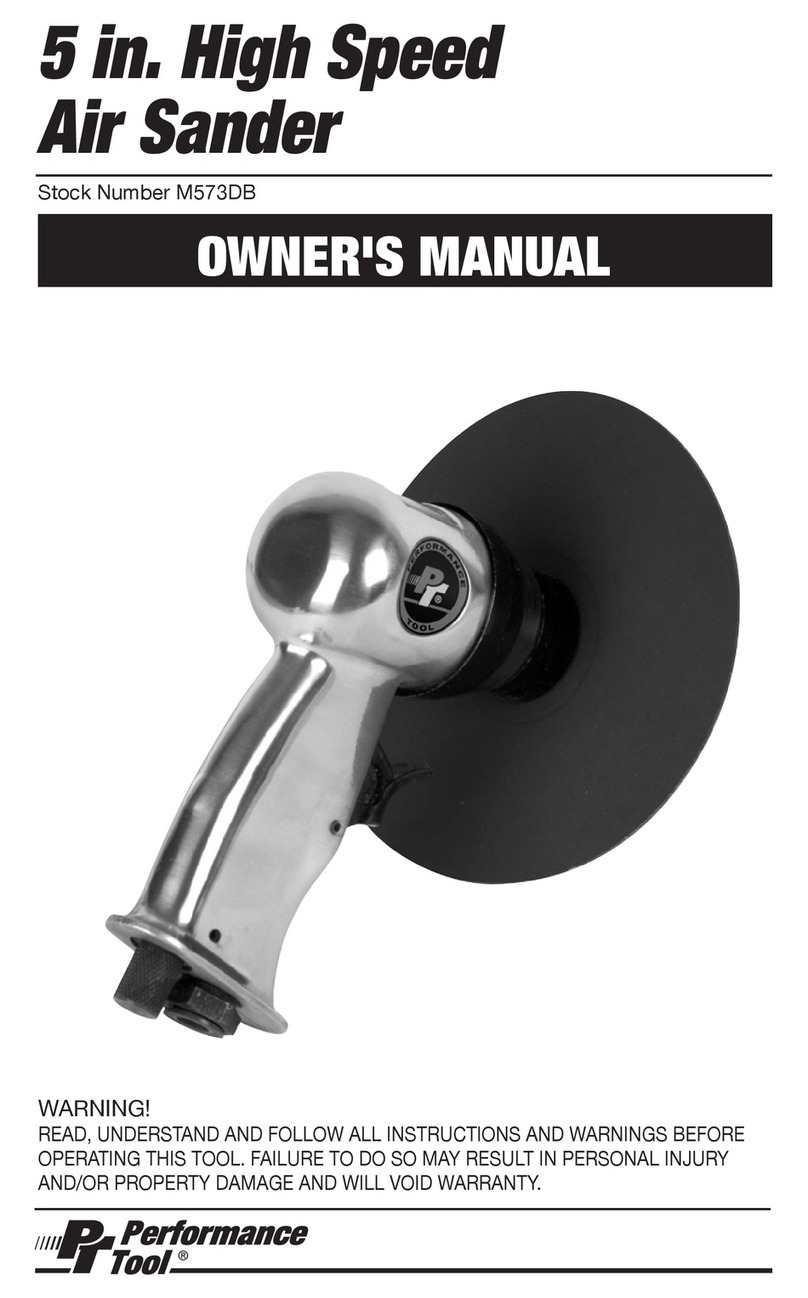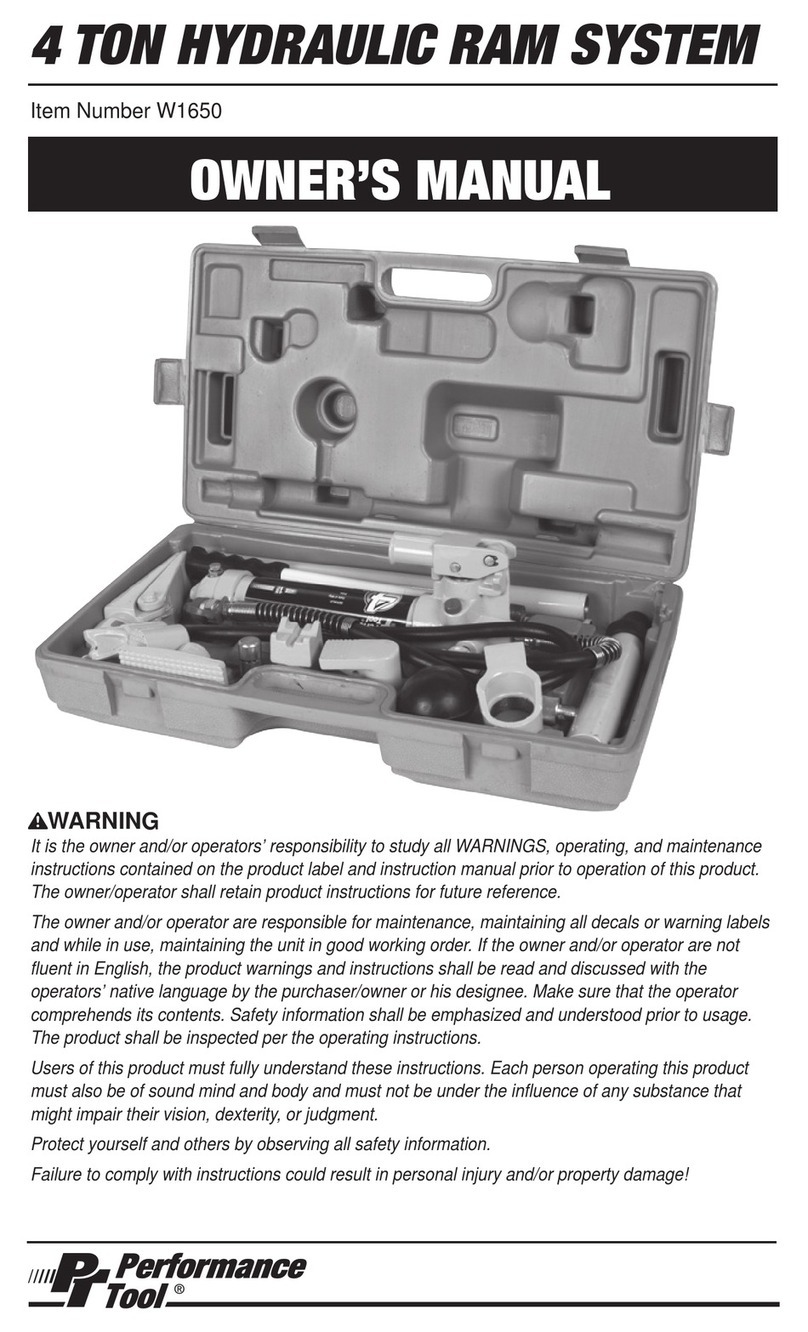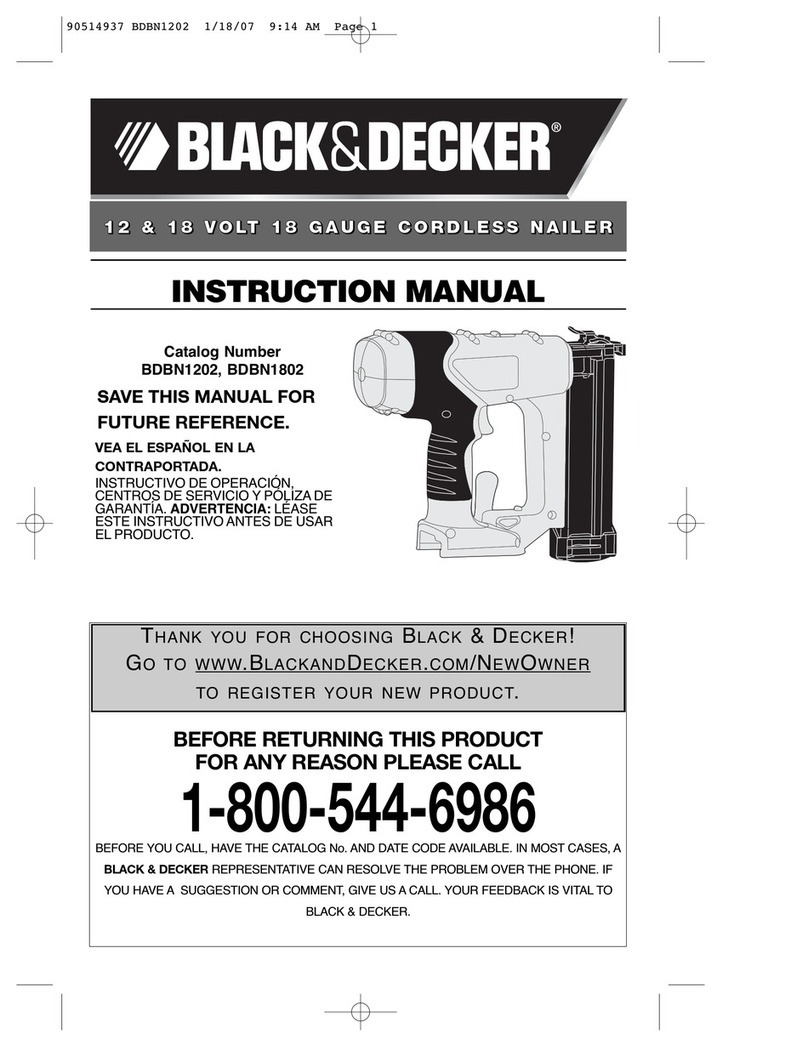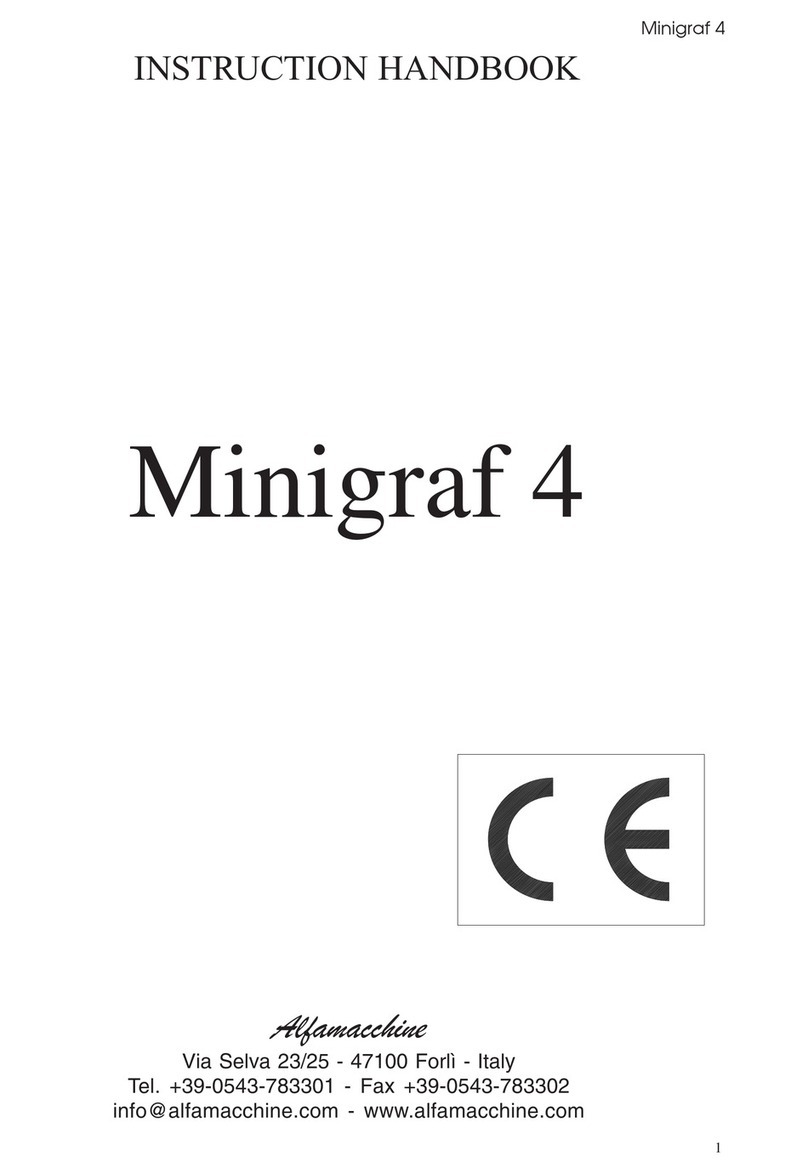IMPORTANT SAFETY INFORMATION
8.
Dress properly. Do not wear loose clothing or jewelry. Contain long hair. Keep
your hair, clothing, and gloves away from moving parts. Loose clothes, jewelry,
or long hair can be caught in moving parts and increases the risk of injury.
9. Stay alert, watch what you are doing and use common sense when operat-
ing a power tool. Do not use tool while tired or under the inuence of drugs,
alcohol, or medication. A moment of inattention while operating the tool may
cause serious injury.
10. Avoid unintentional ring. Keep ngers away from trigger when not driving
fasteners, especially when connecting the tool to the air supply.
11. Do not overreach. Keep proper footing and balance at all times. Proper foot-
ing and balance enable better control of the tool in unexpected situations.
12. Make sure air hose is free of snags and obstructions. Do not attach an air
hose or tool to your body. Entangled or snarled hoses can cause a loss of
balance or footing in addition to unintentional tool operation. Attach the hose
to the structure to reduce the risk of loss of balance of the hose shifts.
13. Never point tool at yourself or others in work area. Always assume the tool
contains fasteners. Never point the tool at yourself or others, whether it
contains fasteners or not. If fasteners are mistakenly driven, it can lead to
severe injuries. Never engage in horseplay with the tool. Respect the tool as a
working implement.
14. Keep ngers away from trigger when not driving fasteners to avoid acciden-
tal ring. Never carry the tool with nger on trigger since you could drive a
fastener unintentionally and injure yourself or someone else. Always carry the
tool by the handle only.
15.
Never modify or alter a tool. Doing so may cause malfunction and personal injuries.
16. Know this tool. Read manual carefully, learn its applications and limitations,
as well as the specic potential hazards related to this tool.
17. Use only fasteners that are recommended for your model. Do not use the
wrong fasteners or load the fasteners incorrectly.
18.
Check for misalignment or binding of moving parts, breakage of parts, and any
other condition that may aect the tool's operation. If damaged, have the tool
serviced before using. Many accidents are caused by poorly maintained tools.
19. Check safety before use. Make sure the safety operates properly. Never use
the tool unless the safety is operating properly, otherwise the tool could drive a
fastener unexpectedly. Do not tamper with or remove the safety, otherwise the
safety becomes inoperable.
20. Do not use tool if trigger does not actuate properly. Any tool that cannot be
controlled with the trigger is dangerous and must be repaired.
21.
Never use tool which is defective or operating abnormally. If the tool appears to
be operating unusually, making strange noises, or otherwise appears defective,
stop using it immediately and arrange for repairs by an authorized service center.
22. Maintain tools with care. Keep the tool clean and lubricated for better and safer
performance.
23. Never carry the tool by air hose.
24. Store tools out of the reach of children and other untrained people. Tools are
dangerous in the hands of untrained users.
25.
Place tool properly on workpiece. Do not drive fasteners on top of other fasteners or
with the tool at too steep of an angle; the fasteners can ricochet and hurt someone.
IMPORTANT SAFETY INFORMATION
3






























